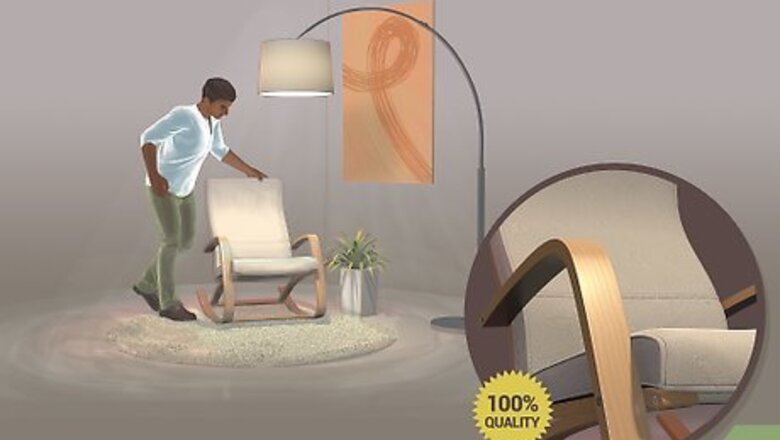
views
Gaining Experience
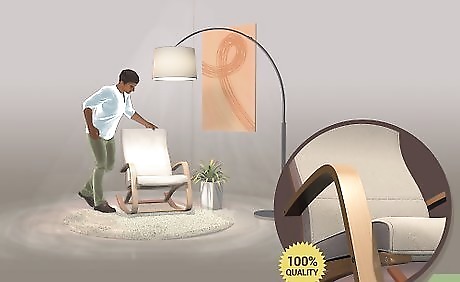
Evaluate your skills, strengths, and weaknesses. If people regularly compliment your decorating skills and turn to you for advice, that's a good sign that you have the natural talent to be an interior decorator. However, when working for others, you'll be exposed to a variety of different tastes and styles. You'll have to be able to show an extensive knowledge of space planning, fabrics, and materials and you'll also have to be able to work with different personalities. List areas that may be challenging, and start working on them. You will also need great organizational and business skills to handle jobs competently and efficiently.
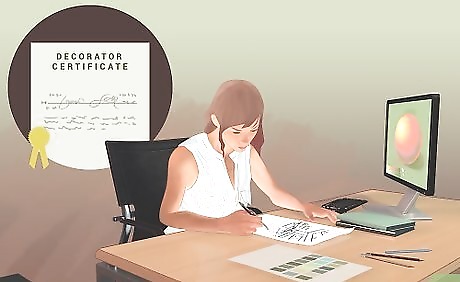
Get training. You won't have to have a degree to work as an interior decorator, but some classes or certifications can give you greater credibility. Many community colleges offer associates degrees, and colleges often have certification programs or short courses on interior design. Online programs and classes in home staging or organizing can be helpful as well. Besides all of that, you can begin teaching yourself immediately. Learn the fundamentals, such as types of materials, decorating history and popular decorating styles.

Practice interior decorating. Volunteer to help friends and family with decorating projects. Look for volunteer projects with local organizations. Look for service organizations like Habitat for Humanity and local shelters. Even decorating spaces for special events is a good experience.
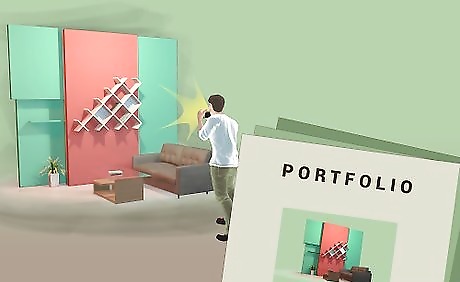
Put together a portfolio. Make sure to take photographs of all the projects that you complete. Keep hard copies as well as showing off your work online. Groups on Flickr, HGTV and other design sites as well as decorating blogs all offer opportunities to show off your work as well as network with others who share your interest and can give you more information about how to become an interior decorator. You may need to take on jobs for free at first in order to expand your portfolio. Making sure your portfolio translates to an electronic form is critical. In order to get the most out of your portfolio, you will want to create a website that highlights your work and keep an active blog to promote what you've done. Utilize any and all popular social media sites, like Facebook, Twitter, Pinterest or Wanderfly. These sites are great spaces to share your work and engage in discussions with other people interested in interior decoration.

Find a job. Look for a job in interior decorating or visual merchandising. Competition is high, so a high paying, professional job may not be easy to find. However, you can get started by working in a furniture store, design center, or local department store. A job that offers a chance to do some decorating and visual merchandising--arranging items that attract buyers' attention and are pleasing to the eye--will add to your experience and portfolio.
Starting an Interior Decoration Business
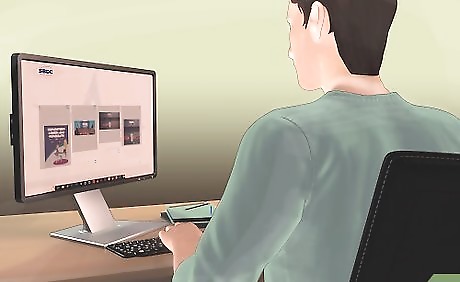
Draft a business plan. The first step in starting any business is drafting a usable business plan. You can find some help with this process here. A good business plan consists of many things. You are trying to outline some basic concepts, like how your business will generate money and customers, how much it will cost to operate the business, and how you intend to expand or grow your business. Some things to address are: It may be helpful to meet with your local Small Business Development Center. SBDC's provide help during all of the stages of a business' life cycle and can help you put a business plan together. Address your customer base. In your business plan, you will need to identify how you will drum up business. With interior decoration businesses, word of mouth and local advertising are effective ways of building a customer base. Address your financial situation in your business plan. Depending on how large or small you want to go with your interior decoration business, you may need to rally investors to support your efforts. In order to get others to invest in your business, you need to determine how much money you will need, how much you will generate, and how you will pay back any investors. If you think your business will need employees, make sure to discuss hiring tactics and what these employees will cost you in your business plan. Chip and Joanna Gaines Chip and Joanna Gaines, Remodel & Interior Design Experts Believe in your business. "It’s hard to describe the feeling that comes with starting your own business. It really is so much work in the beginning that you lose yourself in it. But then you open the doors, and it’s like you’ve given birth to this new thing that didn’t exist before. Then when it starts to flourish, well, that’s just icing on the cake. To get to see it live and breathe and to know that this thing you created out of thin air can put a smile on other people’s faces is such a blessing."
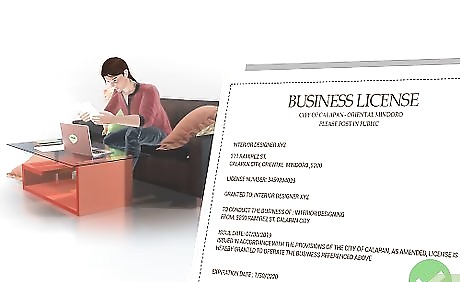
Get a business license. Even if you plan to keep your business small and the overhead costs low, you will need a business license from the township, city or municipality where you intend to operate the business. Getting the proper licenses can help you get discounts on materials and increases your legitimacy in the eyes of potential customers. Your interior decoration business will most likely require a “Business Occupancy License”. These licenses are acquired from your city or township, are fairly inexpensive and do not require site inspections.
Acquire startup capital. You'll need some money to get things started, mostly to cover the cost of materials. Your startup costs for an interior design business can be low, but you will need a business license. You might also need to rent office or storage space, depending on how large you want your business to be.

Get materials. Find sources for materials and supplies. Without a license, you may not be entitled to designer discounts. However, you can begin to negotiate with suppliers if you are buying in bulk. You can also learn to find inexpensive sources for materials like overstock stores and thrift shops.

Spread the word. You will want to advertise your services to potential customers. Paid advertising on local television or the local newspaper can be effective. Also, make sure you take the necessary steps to promote your business online, as a majority of people who need interior design help will probably turn to the internet to find someone. Finally, your business will rely heavily on word of mouth advertisement. People who see your work will get your name from friends, family, and acquaintances and seek you out. You absolutely must have a business card in this line of work. Make sure your cards look professional and hand them out liberally. Leave cards with every client you work with.
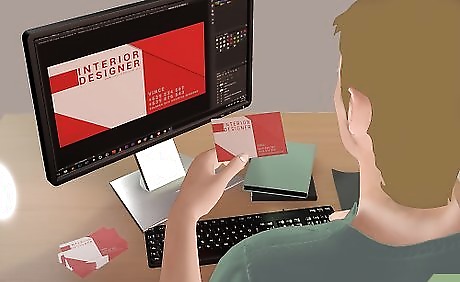
Hire help. You may find that your business expands to a point that you can't possibly handle all of the work yourself. If this happens, you will need to hire some help. Be sure that the person or people you hire have the same sensibility and attitude towards decorating that you do. You want your interior design company to have its own style.
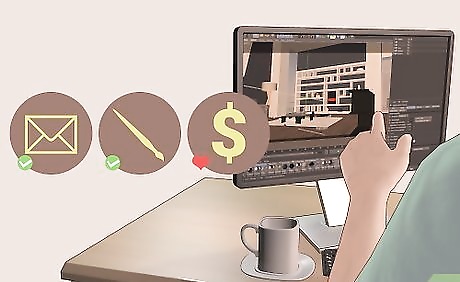
Consider virtual decorating. You can work remotely in interior decorating. Essentially, people take pictures of the space they need to be decorated, send them to you, and you, for a fee, can draft a decorating plan for the client without ever stepping foot in their home or business. This can be a really effective way to work in interior decorating without maintaining a brick and mortar business.
Becoming an Interior Designer

Know the difference. An interior designer is not an interior decorator. These are two different jobs, that require slightly different skill sets and have different educational and certification requirements. As a general rule, interior designers are far more employable and tend to make more money than interior decorators.

Take courses. The main difference between a designer and a decorator is education. To become an interior designer, you need to enroll in courses on interior design at a university, community college, or design school. These courses help you learn about interior design in order to pass licensing and certification exams, while also helping you learn the technical aspects of design, such as working within the guidelines laid out in local and municipal building ordinances.
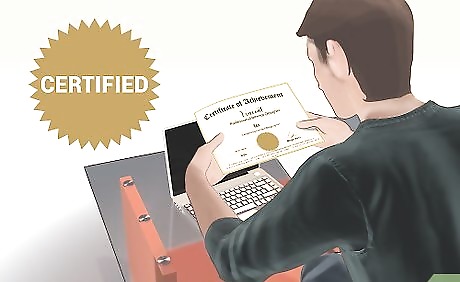
Get your license. Depending on what state you live in, the licensing requirements and guidelines are different. Some states don't require any licensing for interior designers while other states will not allow you to work in interior design without a license. Whether your state requires licensing or not, you really need a license to be viewed as a legitimate and employable interior designer. In many states, you need to pass the NCIDQ (National Council for Interior Design Qualification) exam to receive your license to practice interior design. California has its own certification process overseen by the CCIDC (The California Council for Interior Design Certification). You will need to identify the licensing process for interior designers in your state, as practices and exams vary widely.
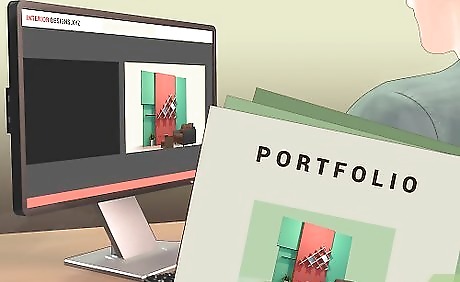
Build a portfolio. Just like decorators, designers need to keep a record of the jobs they have completed and have evidence of the quality of their work. You can populate your portfolio more quickly if you are initially willing to work for free or take on design projects for friends or charitable organizations with small budgets. Make sure you take high-quality photographs of your work to include in your portfolio. It is wise to be able to convert your portfolio to an electronic format. This will be helpful when applying to jobs or promoting your skills on the internet.
Get work. Interior designers are needed for residential and commercial jobs. They are also far more employable than decorators, making finding a job easier. Look on any popular job search site (like Monster, Indeed, or Careerbuilder) for work in interior design.




















Comments
0 comment